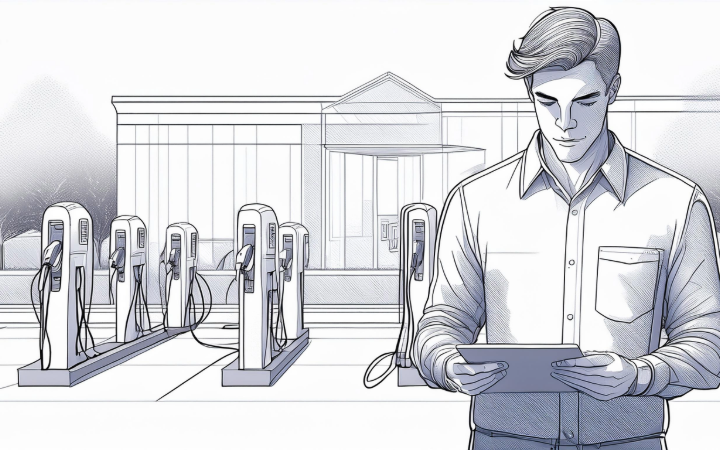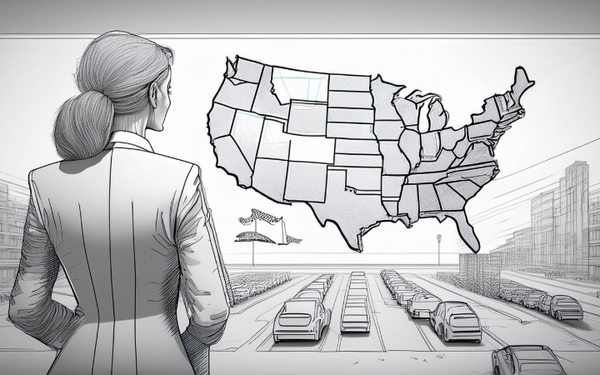7 Challenges Faced by Charge Point Operators
The road to establishing a reliable and accessible charging network is fraught with challenges for Charge Point Operators (CPOs), here is the top seven we've identified.

The road to establishing a reliable and accessible charging network is fraught with challenges for Charge Point Operators (CPOs), here is the top seven we've identified.
The electric vehicle (EV) revolution is rapidly changing the automotive landscape, driving a need for extensive and efficient charging infrastructure. Charge point operators (CPOs) play a crucial role in this transformation, but the road to establishing a reliable and accessible charging network is fraught with challenges.
From complex site selection processes to navigating slow energization timelines, CPOs face a multitude of hurdles. This article explores the key challenges faced by CPOs and how companies are working to overcome them.
1. Site Selection: A High-Stakes Decision
Choosing the right location for an EV charging station is critical for CPOs, as errors can be costly both financially and operationally. Charge points need to be strategically placed in locations that meet drivers’ needs while ensuring a return on investment.
CPOs rely on data-driven insights to make these decisions, considering factors such as traffic flows, electricity availability, local competition, and proximity to points of interest like coffee shops or gyms. The challenge is to ensure that data sources are comprehensive and unbiased to avoid making decisions that could lead to suboptimal site performance.
2. Navigating Long Lead Times and Slow Energization
One of the biggest challenges for CPOs is the lengthy process from site selection to installation and energization of charging points. This timeline can be significantly delayed due to complex contracts, lengthy power applications, and coordination with Distribution Network Operators (DNOs). The energization phase, where chargers are finally connected to the power grid, is particularly slow and often needs to be address bureaucratic inefficiencies.
The industry continues to struggle with standardizing and the energization process remains an industry-wide challenge, requiring better collaboration between CPOs, DNOs, and other stakeholders to speed up deployment.
3. Adapting to Evolving EV Adoption and Usage Patterns
The EV market is still in its infancy, with adoption currently driven by early adopters whose charging behaviors are not representative of the wider population. As the market shifts towards mainstream adoption, CPOs must anticipate changes in user behavior, such as varying charging needs between commuters, families, and business travelers.
CPOs face the challenge of future-proofing their networks to accommodate these evolving patterns. For example, the traditional focus on motorway service areas is expanding to include more diverse locations like retail parks and hospitality venues, providing users with more convenient and varied charging options. Predicting future usage trends is crucial but difficult, as it involves analyzing large datasets and making assumptions about the behavior of future EV owners who may have different needs and expectations.
4. Ensuring Safety, Accessibility, and User Experience
Safety and accessibility are paramount for CPOs, particularly as they seek to expand beyond well-lit, secure service stations into more varied environments. Charge points need to be located in safe, well-lit areas with other people around to ensure that users feel comfortable, especially at night. Factors such as crime rates, lighting, and overall safety are increasingly influencing site selection decisions.
Additionally, the user experience remains inconsistent across different charging networks. CPOs aim to create a seamless charging experience where users can plug in and charge with minimal effort, similar to Tesla’s proprietary charging network. Achieving this level of consistency across various networks and charge point brands is challenging but essential for broader EV adoption.
5. Partnerships and Collaboration: A Double-Edged Sword
Collaboration with partners is essential for CPOs to overcome industry challenges, but it also presents its own set of difficulties. Effective partnerships with data providers, DNOs, and technology platforms can streamline processes and improve decision-making. However, these partnerships require careful management to ensure alignment of goals and smooth communication across multiple stakeholders. They underpin everything from site selection to customer engagement. Yet, not all collaborations are straightforward; building effective relationships takes time, and there are often conflicting interests to navigate.
6. Scaling Up to Meet Growing Demand
The scale of the task facing CPOs is immense. With the UK targeting around 500,000 public chargers by 2030, CPOs need to install nearly 300 chargers every day for the next five years to meet this goal. Scaling up operations while maintaining quality and consistency is a significant challenge that requires CPOs to refine their processes, leverage partnerships effectively, and continuously adapt to new market conditions.
This need for rapid expansion also highlights the importance of data-driven decision-making. CPOs must be able to quickly identify and replicate successful site models while avoiding investments in locations that may underperform. The ability to scale efficiently will be critical to meeting the ambitious targets set for the coming years.
7. Regulatory and Infrastructure Constraints
Regulatory barriers and infrastructure limitations pose additional challenges. Legacy systems and outdated regulations often slow down the deployment of new technologies, creating bottlenecks that hinder growth. Furthermore, the availability of power infrastructure in desired locations can be a limiting factor, with some areas lacking the necessary capacity to support high-powered chargers.
CPOs must work closely with local authorities, power companies, and regulators to navigate these barriers, often requiring innovative solutions to expand charging infrastructure in line with growing demand.
Conclusion
Charge point operators are at the forefront of the EV revolution, playing a vital role in building the infrastructure needed for a sustainable future. However, they face numerous challenges, from complex site selection processes and long energization timelines to adapting to evolving user behaviors and navigating regulatory hurdles.
Overcoming these obstacles requires a combination of data-driven decision-making, effective partnerships, and a focus on enhancing the user experience. As the industry continues to grow, the lessons learned today will be crucial in shaping the future of EV charging networks.





